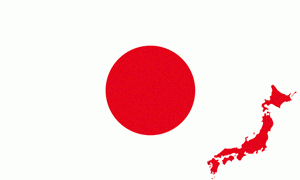
By Christian Hawkesby
At the end of last week, the Bank of Japan (BoJ) joined the club of central banks undertaking large scale quantitative easing (QE). The world’s four largest central banks for developed countries – the BoJ, the US Federal Reserve, the European Central Bank, and Bank of England – are all undergoing massive balance sheet expansion.
After being a case study of a crippled economy and banking system in the 1990s, the Japanese authorities have watched on politely as policy makers in the West have struggled to combat the impact of their own Global Financial Crisis (GFC). If anything, they were quietly sceptical of benefits of quantitative easing when weighed against the costs.
But now, with a sluggish economy and the threat of deflation, the BoJ has finally followed suit. The BoJ is aiming to expand its balance sheet from ¥158 trillion at end-2012 to ¥220 trillion by end-2013 and ¥290 trillion by end-2014. On some measures this will mop up all the net issuance of Japanese Government Bonds (JBGs) for the next two years.
The new BoJ Governor, Mr Kuroda, had hinted at a bold approach since his appointment, but markets were surprised by the size of the programme and the lack of opposition from his BoJ colleagues. The Nikkei reached its highest level since 2008 and the JBG market swung wildly as it digested the implications of the news.
For New Zealand and global markets there are perhaps four main implications:
i. The move by the BoJ is yet another reason for global bond yields to remain relatively low, especially as bonds in the US, Australia and New Zealand are seen as a substitute for some investors in the JBG market. The recent loss of US macroeconomic momentum and risks in Europe reinforces this theme of low interest rates. The US and NZ 10 year yields are now at their lowest levels in 2013, at 1.70% and 3.40% respectively.
ii. Low government bond yields provide further support to riskier asset classes like equities and credit. In effect, policymakers are collectively trying to kickstart economies by encouraging investors to provide more finance to credit and equity markets. Japanese investors many continue to search for yield in Australasia.
iii. The BoJ arguably becomes the new aggressor in the currency wars, providing yet another reason for the NZ dollar to remain elevated versus its trading partners, keeping the NZ TWI near record highs. In the March Monetary Policy Statement, the RBNZ outlined that the TWI remaining elevated could cause it to cut the Official Cash Rate (OCR).
iv. If the recent actions of central banks are successful, at some stage investors will need to start looking for inflation protection. With the BoJ, the US Federal Reserve, the European Central Bank, and Bank of England all putting economic growth and job creation at the top of their agenda, they being quite clear that (at some point) they are willing to accept some collateral damage in the form of higher inflation.
More generally, with the BoJ joining other major central banks in undergoing massive balance sheet expansion, they have raised the stakes in the fight for a sustainable global economic recovery. However, by adding another layer of complexity, it also raises the stakes when it comes time to navigate an exit from quantitative easing.
Christian Hawkesby is a director and head of fixed income at Harbour Asset Management.
1 Comments
Fed gets a serve for its "large and dull hammer” - http://www.ft.com/intl/cms/s/0/4b4ca080-9d61-11e2-88e9-00144feabdc0.htm…
We welcome your comments below. If you are not already registered, please register to comment.
Remember we welcome robust, respectful and insightful debate. We don't welcome abusive or defamatory comments and will de-register those repeatedly making such comments. Our current comment policy is here.